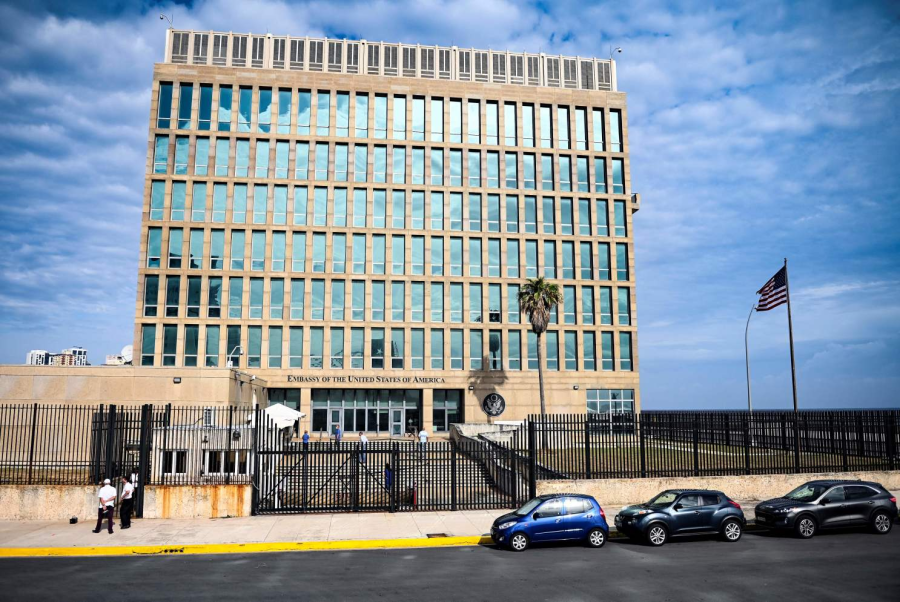The Mystery of Havana Syndrome
October 9, 2021
A CIA officer stationed in Serbia was recently evacuated to the US, apparently the latest victim of the mysterious ‘Havana Syndrome’.
According to the BBC, in late 2016, several US diplomats in Havana, Cuba, began feeling similar symptoms of dizziness, vertigo, and strong headaches. They claimed the pain came randomly in loud and high-pressured bursts, and briefly subsided once they left the spot they were in when the intense headaches began. The pains and dizziness caused sleeplessness, memory loss, and a host of other symptoms. After these strange reports in Cuba went public, several other US diplomats in China and Uzbekistan began reporting they too had suffered something similar but had ignored it. One diplomat was diagnosed with an organic brain injury after claiming she and her dogs both had symptoms of the ailment. A slew of other Havana Syndrome cases were reported by US diplomats in Russia, Poland, Georgia, Taiwan, Kyrgyzstan, Colombia, and the UK. The situation became even more disturbing when, in 2018, two more US government officials suffered from Havana Syndrome attacks on American soil, one in the suburbs of Northern Virginia, and another in a park adjacent to the White House.
Beginning in 2021, reports of Havana Syndrome began to snowball with dozens of US diplomats and their children beginning to suffer from the symptoms of dizziness, headaches, and vertigo in Vienna, Austria. At this time Vienna was hosting new negotiations between the US and Iran on the Iran nuclear deal. In August, a CIA officer was impacted in India, and in the same month, Vice President Kamala Harris’ trip to Vietnam was delayed after two diplomats reported having the syndrome. With the CIA official being evacuated from Serbia, it has been estimated that 200 US diplomats and officials have been impacted by Havana Syndrome, and there are no signs of that number slowing down. In fact, it appears to be increasing rapidly. There are various theories for the cause of Havana Syndrome; however, there is little concrete evidence for any claim.
Briar Woods students were asked about their thoughts on the causes of Havana Syndrome with one anonymous junior saying “[he thinks] it’s probably stress. Sound, altitude, I think it’s a multitude of things and they’re all lumping it together because the symptoms are so vague. [The symptoms] are so broad, so [the causes are] stress, iron deficiency, all of it.” While another unnamed junior claimed that “Some tyrannical government… I think they’re just poisoning people, just putting [something] in their drink.” Another junior informed on the issue had a more creative theory, saying, “Crickets. You have these crickets… In Cuba… that aren’t native [in the US]… and they have a song that’s above [the frequency of] human hearing. You have people native to the land that have heard it their entire lives, they’re desensitized, but these diplomats who just arrived aren’t used to it [and get vertigo].” While their theories wildly varied, none of the Briar Woods students interviewed fully believed the bizarre and sci-fi-esque leading theory on the cause of Havana Syndrome: concentrated microwave attacks.
In 2004, the WaveBand Corporation developed a portable microwave weapon for the US Marines. The weapon, designed to temporarily incapacitate targets while not giving any fatal or permanent damage, was relatively small and could be fired from a vehicle. The microwaves would heat parts of the brain, causing a shockwave throughout the victim’s skull. The project was scrapped after ethical concerns of human rights violations for testing the weapon. However, there are suspicions the US’s enemies, such as Russia and China, would have less reservations about ethics. While there is no definitive proof that an American rival is behind the attacks or that microwave weapons are being used at all, Russian military intelligence have been reported near the sites of an attack, and during the Cold War, the American Embassy in Moscow was found to be enveloped in microwave radiation. Canadian scientists, however, claim a chemical Cuba deployed to combat mosquitos in 2016 may have caused the symptoms. Still, they do not have any explanations for the other attacks that have occurred across four continents. Many others believe that there is no physical cause for the Havana Syndrome, but instead, the ailment is simply a case of mass hysteria among the US envoy community.
Havana Syndrome, an incredibly mysterious affliction with little tangibility outside of the complaints of diplomats and a few brain injury diagnoses, is becoming an exponentially rising threat for US diplomats, destabilizing American embassies and harming America’s foreign policy as a whole. It is spreading fear and paranoia, and envoys fear that whether they are in the US, hostile countries like China and Russia, or friendly countries like the UK and Germany, they could become victims of an agonizing and persistent ailment without any real way to prevent it. If it is discovered an American competitor is behind these attacks, the US’s response will be one of fury at such a blatant and malevolent act.
Though it was thought technology had ended warfare between global superpowers, naively believing the invention of nuclear weapons would deter the very thought of attacking an enemy nation, it seems technology may have caused warfare to take on a new form: a type of warfare with subtle weapons advanced beyond the dreams of Oppenheimer, a warfare with more frequent attacks, not on the soldiers, but on innocent men, women, and even children who represent their nation abroad.


